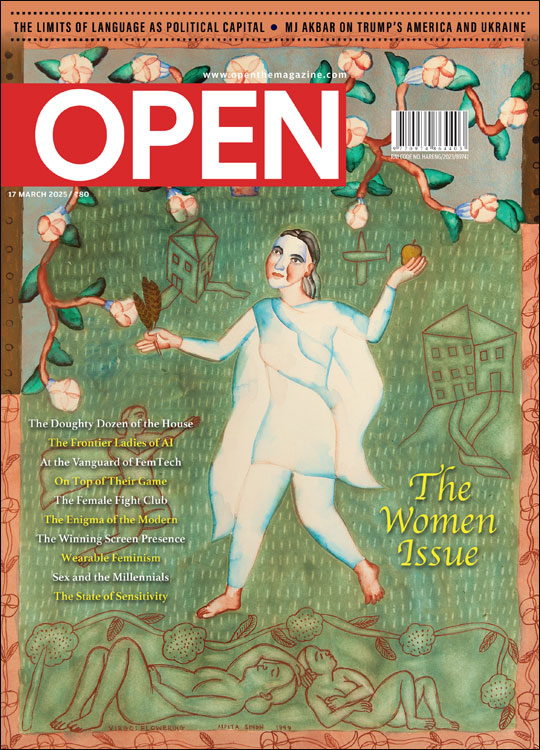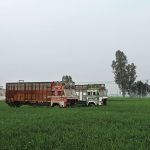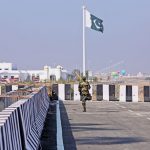The Kargil Chic
From war zone to heritage hub, it’s the new destination of culture tourism in the Himalayas. Pallavi Pundir chronicles the transformation. Photos: Raul Irani
 Pallavi Pundir
Pallavi Pundir
 Pallavi Pundir
|
22 Jun, 2017
Pallavi Pundir
|
22 Jun, 2017
/wp-content/uploads/2017/06/Kargil1.jpg)
“CARRY SUNSCREEN,” my father’s voice cackles over the phone, “The sun is direct and harsh.” It’s odd that this is his first piece of advice. I had feared trepidation in his voice. Instead, there is a hint of emotion. Or so I suspect as I protest. It earns me a flurry of instructions on acclimatisation. “Walk around a bit for 45 minutes and you’ll get used to the cold,” he says.
In the family, Kargil as a tourist destination has an uneasy air about it. It was on May 28th, 1999, cocooned in an Army cantonment in Rupa, Arunachal Pradesh, that the name was first jabbed into my 10-year-old consciousness. A news flash on TV had turned the cacophony of our early morning routine into an ominous silence. Squadron Leader Rajiv Pundir of the Indian Air Force, a family member, was among four aboard an Mi-17 helicopter that had been gunned down—the first casualties of the Kargil War. I was allowed to skip school that day. The conflict would evoke only numb acknowledgment henceforth. So too, the name. For the rest of the country, Kargil overnight became a faceless entity, a heightened emotion that would cast a jingoistic spell for years to come. Kargil wasn’t just a war, it was a simulacrum of power, an expression of us versus them. And so, as the landscape folds and unfolds during our drive to Kargil from Leh, I—deliberating every curve and crevice, blinking away the numerous cantonments that dot the terrain, and marvelling at the brown-purple-yellow tinge on its arid, summer surface—search for the face of Kargil, post-1999.
There is more to this place than the war, I was told by the Mumbai- based independent filmmaker and photographer Satyarth Shaurya Singh, who has been documenting for Kargil Tourism for three years. “The Kargil community,” he had said, “has come up with ways to talk about themselves, and not in the context of just the war. They are finding ways to become the talking point of the Ladakh region, maybe even better than Leh.”
I ask my Kargili driver if here’s any truth to the claim. Hassan, driving on pensively during his roza hours, laughs. “Bahut kuchh hai wahaan dekhne ke liye, par kisi ko pata nahin hai (There’s a lot to see there, but nobody knows).” We briefly revel in this moment of validation.
As a town, Kargil unravels like a discordant note, without as much as a prelude. On the banks of Suru river, a tributary of the Indus, the hamlet seems caught in a time warp. Its houses, made of stone, and wattle and daub, stand with contrasting facades— a few old and dilapidated, and a lot with only skeletal beams to show for the moment. The streets are messy. There is an old four-storey sarai at the riverbank, its blackened doors locked and interiors heaving with stories. “That sarai, or the traditional rest house, belongs to my family. It was built in the 1920s by my great- grandfather, Munshi Aziz Bhat,” says Muzammil Hussain, 29, director of Roots Collective in Kargil, a non-profit agency that brings together social research and design consultancy to help revive tourism in the region, specifically his hometown Kargil. We are sitting in his café, a hip new place with knitted cushions and traditional low tables that stands out like an anomaly in a town full of rundown chai stalls. Bhat was once the official petition drafter for Hari Singh, the Maharaja of Kashmir. The sarai, it turns out, is where the newly-scripted narrative of Kargil begins.
Much before Partition divided Kashmir, the township was a melting pot of Central Asian trade, lying literally at the crossroads of routes that linked Punjab, the Valley Baltistan, Khotan, Yarkand and Tibet, and bustling with business and ethnic diversity. “This is where the northern and southern silk routes met. Ladakh, in fact, was not the original silk route. It was later promoted by Britishers,” says Ajaz Hussain Munshi, 54, a former government employee and grandson of Munshi Aziz Bhat. Sometime in 2005, Ajaz, urged by research done by his academic friends Jacqueline H Fewkes and Abdul Nasir Khan (who later presented their findings in a documentary, The Culture of Here), and having chanced upon precious stones and Italian combs recovered from the sarai, decided to open it. “And there it was,” he says, referring to a treasure trove of old merchandise. “Every mercantile item we found highlighted the network in Ladakh. Be it from Germany, France, England, or, most of the time, Central Asia. We also saw trends. With the passage of time, the commodities changed—Indians mostly had indigo, opium or chemical dyes; Tibet had tea, rice came from Kashmir, khubaani from Skardu, and so on. Kargil was equidistant from all these areas. This was the melting pot. The trade centre was here.”
Ajaz and his family found some 4,000-odd items dating back to the 1800s, and have now stored some of the collection in the Munshi Aziz Bhat Museum in Kargil that he set up in 2004 along with his brother, Gulzar Hussain Munshi. It offers a rare glimpse of Balti community traditions. The local cuisine is a confluence of Tibetan and Kashmiri preparations and the attire has Kashmiri influence, while their music and poetry—like their architecture— seem entirely indigenous. The museum has other artefacts that offer a vivid picture of Kargil in its heyday. Carpets, jewellery boxes, varied headgear, saddles, garments, hookas, utensils, lamps and the odd modern-day product such as a Lux soap bar, Gillette shaver or Colgate tube. “We even found a document that states that the king of Hapur in Skardu owes 6,000 silver currency units to my grandfather,” laughs Ajaz. In 2015, the museum came into the limelight for its collaboration with India Foundation for the Arts and Inlaks India Foundation, which drew the researcher Latika Gupta to Kargil as its curator. The result is a newly constructed wooden building designed to look like a thriving old market.
“The 1999 war may have gone on for over a month or so, but for the Kargil people, it went on for seven years. For the longest time, life was unstable. It is only now that we feel safe. Finally, we have begun to rebuild” – Ajaz Hussain Munshi, co-founder, Munshi Aziz Bhat Museum
Partition put an end to Kargil’s prosperity. Whatever little trade left got blocked by the Communist takeover of China. “The trading families in Leh and Kargil suffered a huge setback. Families had to choose their options. My grandfather died in 1948. After that, the sarai was in neglect, until now,” says Ajaz. Once the museum attracted attention, locals began to join the effort to showcase Kargil’s heritage. “People here are very wary of antique dealers, but once they know that their family name will be preserved through the objects, they willingly contribute,” he says. The hope is to reclaim a charm that once was. “The old bazaar still retains the essence of the old trade,” Ajaz says. “You find the same activities in the same place even now. Only the people have changed; the setting is the same.”
It helps that Kargil has been on the map for trekking and hiking expeditions. Routes along Karste Khar, Hardass (also called the ‘apricot valley’), Wakha, Sot, Urgen Rzong Cave Monastery, Sapi Gang Tso, Lhalung, Chanigund and Kanor have slowly taken over conventional choices such as Drass (the war memorial) , Suru Valley (for Nun and Kun peaks) and Zanskar. For thrill seekers, there’s bouldering. The recent Suru Boulder Festival drew over 90 participants from across the world. A Pune-based NGO, Sarhad, is planning Kargil’s first international marathon in July. The place already has a rich history of polo, with regional matches scheduled every August. In April, apricot blossoms lure Japanese and Korean tourists. Night photography and brown bear expeditions are gaining popularity too. Explorers, say locals, couldn’t ask for more.
The evening sun streams over the mountain onto barley fields and appears to curl up against rocky crags towering above us. Some 11 km from Kargil town is the ghost village of Hundarman. We stop at a ‘viewing point’ to size up the village within a stone’s throw of Pakistan-controlled territory, peering curiously at these huts nestled between hills by a rivulet. ‘Unlock Hundarman’, a signboard demands of us. Further ahead, we’re greeted with a stoic silence that hangs over a cluster of low-ceiling houses with shattered windows. Said to be about 500 years old, this village was under Pakistani occupation between 1947 and 1971, and during the 1971 war, its residents fled to a settlement further on the other side. The few who stayed back moved a kilometre or so upstream.
Hundarman is now part of a tourist project helmed by Hussain’s Roots Collective. “We have included the village in our travel itineraries just to understand the old culture of the place, and to convert the space into a living experience,” says Hussain, who also runs a travel agency. In 2015, he did a one-week-long architectural documentation workshop with 25 architecture and design students of Indus University, Ahmedabad. While exploring the ruins, the crew found guns, shells, utensils, medicines, coffee boxes and other objects worthy of preservation as a snapshot of another time. Letters written by residents’ relatives from across the LoC have been put on display. “This is where we had the idea that we could do something bigger just so that people can look at Kargil from a different perspective and not just from a war angle. We still ended up using the narrative of war, but we decided to give it a softer push. Which is why we called it a Museum of Memories,” says Muzammil, who, with other locals, has opened a homestay in the village upstream for those who want to stay and learn more from their hosts.
Similar initiatives have been taken in other closeby places. In Hinasku, for instance, Muzammil and his team have documented oral histories and old forts. The Kargil district, with its six ethnic tribes and languages, is replete with traditions and myths. Poetry is another preoccupation. “In a way, it’s fun to discover stories. At the same time, it becomes a good travel programme for outsiders. People build a strong bond with the village, and when they go back, they become ambassadors for this project ,” says Muzammil, a Symbiosis graduate who has worked as a design researcher in Delhi.
Dhahanu valley, famous for its resident Brokpas—the last of a pure Aryan lineage, according to local legend—opens up to us with celebratory Tibetan flags and marked roads. Its people are scattered across the valley’s four main settlements of Dha, Hanu, Darchik, Garkon, but we don’t have to go that far. A few villagers with ornamental headdresses stop our vehicles midway for a ride. Today, a senior lama has come all the way from Dehradun, and celebrations are underway in Garkon, about 80 km from Kargil town, where Brokpas have gathered from all across in their traditional sheep skin capes, robes and headgear.
After a brief ceremony, a cultural dance takes over the proceedings— a merry-go-round sequence with men and women twirling under the harsh sun, their faces flushed.
Clearly, Brokpas are culturally distinct from other Ladakhis. Until some decades ago, their religious practices resembled pre- Buddhist rituals, and the community is still known to practice polyandry. Modernity has had an impact in recent times, and signs of their classic traditions are now visible only at festivals. “It’s a coincidence that you’ve managed to see this,” says Tashi Lhundup, a Brokpa who runs a homestay in his village for tourists. “We don’t have a fixed calendar for any festival, which is why for guests, we often arrange cultural programmes and get locals to perform.” Has the ‘Aryan’ tag and the recent interest in the area helped lure more visitors? “This sells, you know,” says Lhundup with a wry smile. “If you hadn’t witnessed this celebration, your experience of this place would have been much different,” pitches in Muzammil.
“We wanted people to look at Kargil from a different perspective and not just from a war angle. We still used the narrative of war, but we decided to give it a softer push” – Muzammil Hussain, founder, Roots Collective
The celebrations also have sporadic negotiations between Muzammil, Lhundup and a local village treasurer. The discussion is over Bono Na, a five-day festival due in September that is held once every two years (the next one will be in Ganogs, across the LoC). The scale of such an event is always a contentious issue, given what an influx of tourists usually brings along. “We have to respect the local culture,” adds Muzammil.
“CULTURE IS NOT just song and dance. It’s tradition, food or lifestyle. People from outside should also have some awareness,” says Syed Faheem Ahmad Bihaqi, assistant director, Kargil Tourism, an organisation that was set up in 1974. Things have changed dramatically since Bihaqi’s growing-up days in Kargil. “There are less foreign tourists now. From over 20,000-25,000, they have come down to 5,000-10,000 annually. On the other hand, there are a lot more Indian tourists here, up to 60,000 a year,” he says. With 15 years of service with J&K Tourism, Bihaqi’s motto is ‘cultural revival’ through tourism. According to him, tourists are fascinated by the area’s communal harmony amidst all the diversity. “We have Muslims, Buddhists, Sikhs and a small community of Hindus across this region. Our mosques share boundary walls with a monastery or a gurdwara,” says Bihaqi.
Places for visitors to stay are coming up all over the district, even as the Kargil Tourism Board conducts road shows in cities such as Kolkata and Mumbai. Top tour operators across the country are being roped in as well. “Our tourists come mainly from Gujarat, West Bengal and Maharashtra, and we are planning on catering to them with more offers,” says Bihaqi. A Kargil Festival takes place annually that features culinary and cultural offerings.
All of it could give Kargil an entirely new image. Muzammil’s Roots Initiative is representative of what the younger generation wants. Lhundup explains, “Earlier, when we used to go out of our village, to Leh or Srinagar or anywhere, people used to laugh at our language, our way of life. But now, this is the very identity we want to promote, and people are interested.” Muzammil agrees: “There was this lack of confidence in us, particularly in this region. But when I went to Delhi or Pune for the first time, people were in awe. In the town now, people see that they can benefit from this identity.”
Word of the business opportunity it spells has gotten around the district. “Five or 10 years down the line,” says Muzammil, “if this generation wants to join this industry, it will be easy for them.” Bihaqi emphasises the role of elders in the process: “It is not the young ones but the older generation who have done away with local traditions, like the consumption of sattu (barley), which used to be a staple diet here before rice came from Kashmir. There is no conscious effort to preserve tradition here.”
Perceptions, however, still persist that Kargil is merely a transit point for travellers. ‘What is there to do in Kargil?’ is a common retort in Leh. ‘Such innocuous banter often reveals deeper sentiments that structure belonging and regional politics in contemporary Ladakh,’ writes Radhika Gupta, in ‘The Importance of Being Ladakhi: Affect and Artifice in Kargil’ in Himalaya: the journal of the Association for Nepal and Himalayan Studies. ‘Due to religious affinity and the attention brought to it by the Kargil War (1999) between India and Pakistan, Kargil tends to be associated with the Kashmir Valley in the wider public imagination in India. Sectarian differences are glossed over between the Shi’a majority Kargilis and the predominantly Sunni inhabitants of the valley. Kargili Muslims are thus often subsumed under a general pan-Kashmiri (Sunni) Muslim umbrella. This conflation was problematic for Kargilis, particularly prior to the 1999 war,’ she writes.
To escape the shadow cast by the war, locals have taken upon themselves to dispel misconceptions. ‘Are you happy in India or do you want Pakistan?’ is a question that outsiders casually pose to them. The locals, thankfully, know how to humour them. “You don’t know what patriotism is unless you have seen the war, and we have seen it and felt it,” says Ajaz. “The 1999 war may have gone for over a month or so, but for the Kargil people, it went on for seven years. For the longest time, life was totally unstable. Kargil had become a ghost town. The new constructions that you see now have come up because it is only now that we feel safe. Finally, we have the confidence to rebuild.”
Kargilis say they are ready to regain what they had lost, and are doing it by embracing Kargil’s history. A hotel in the main market area, for instance, where we are temporarily lodged, has retained its bunker—a government-mandated structure built in every house during the war. The hotel’s owner talks about the 13 shells that ravaged the premises. A fused shell is on display in the main lobby. It is moves such as this that help locals rewrite the narrative of the place they inhabit. Outsiders, they’re glad to note, are signing up for it too.
A part of the project is about pride in who they are. “We have six different identities, and before all these efforts began, a Balti didn’t know who a Purti is, Purtis didn’t know who Butos are, and Butos didn’t know about the Brokpas,” says Ajaz, “We now have seminars and research papers, and we find younger generations from different communities who are eager to learn. People have come to know the value of their tradition and identity.” Paradise may have lost in the Kashmir Valley, but the proverbial state of bliss seems to have found Kargil.

/wp-content/uploads/2025/03/Cover-Women-Issue-2025.jpg)













More Columns
Is Trump Really Doing A 'Reverse Kissinger'? Sudeep Paul
Rohit Sharma And Toss Don't Go Well! Short Post
Bitcoin Mania Boost Madhavankutty Pillai